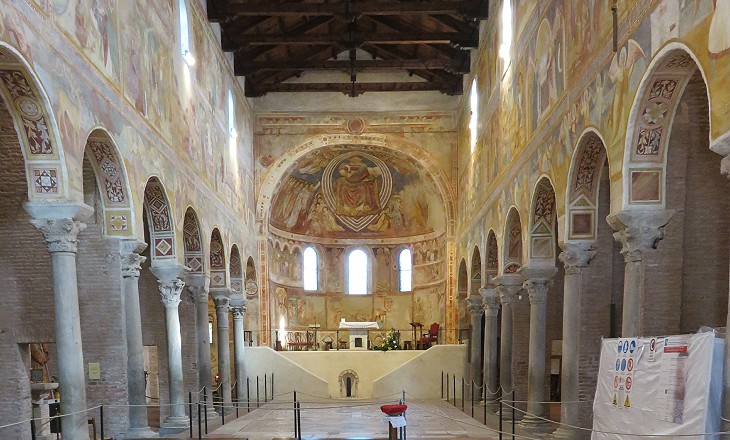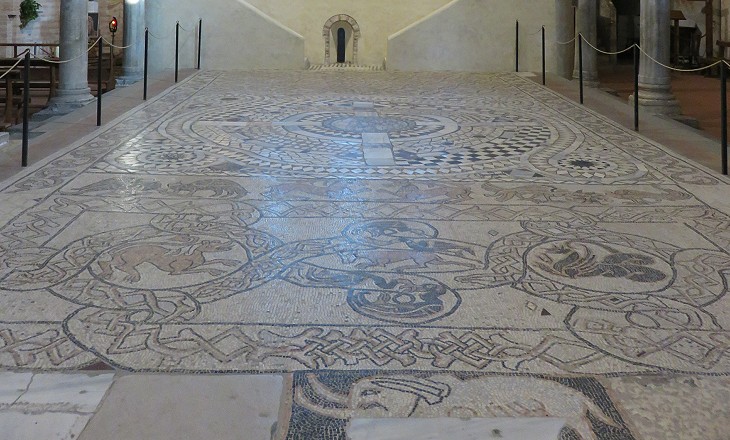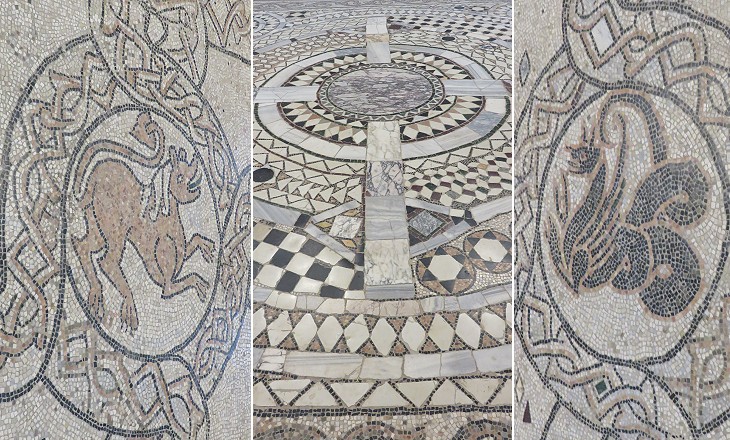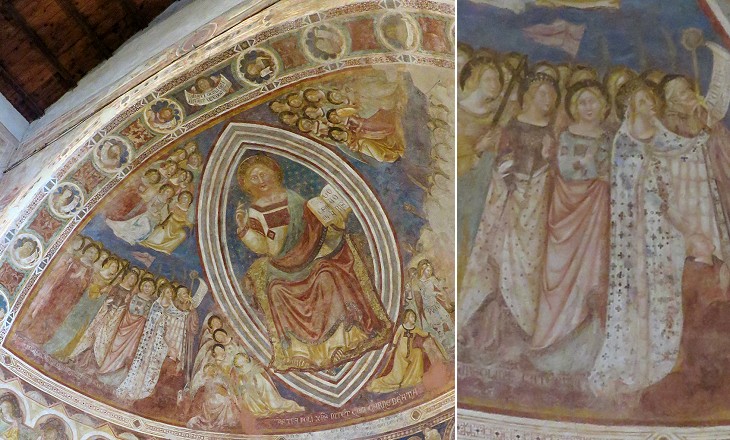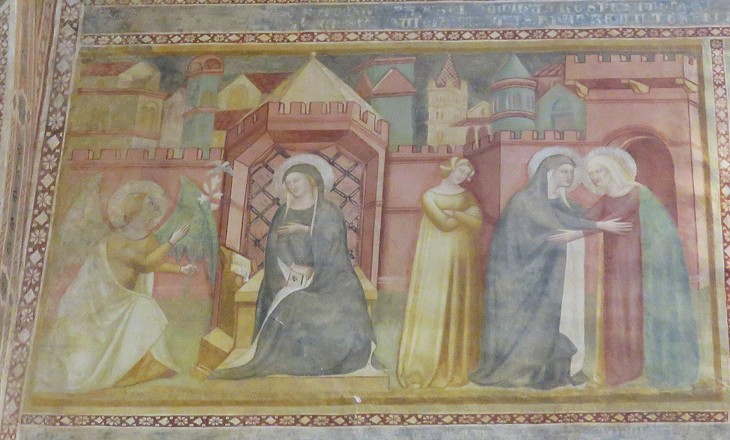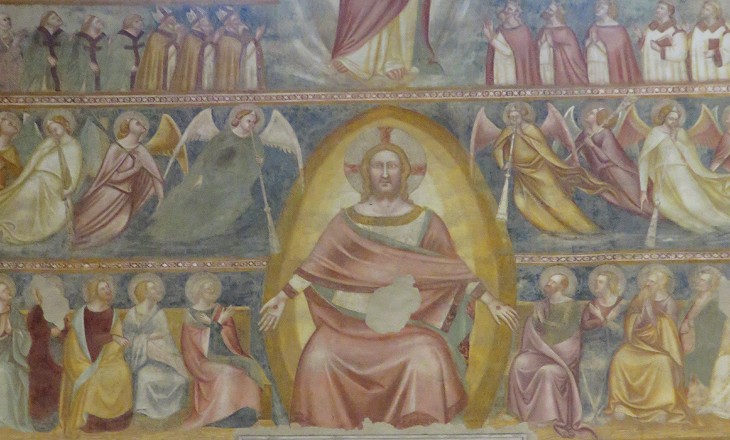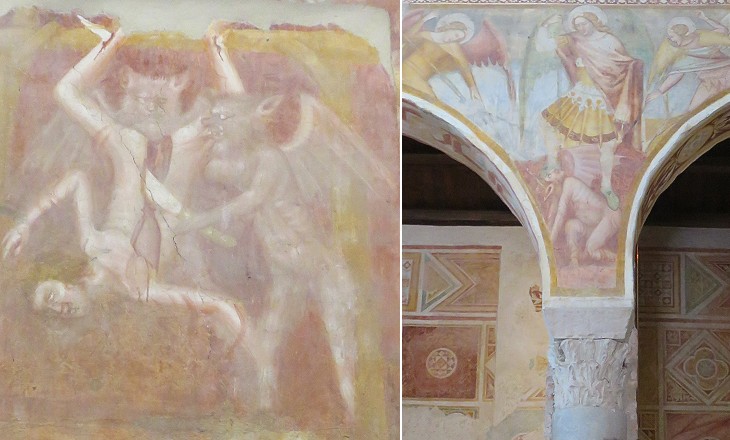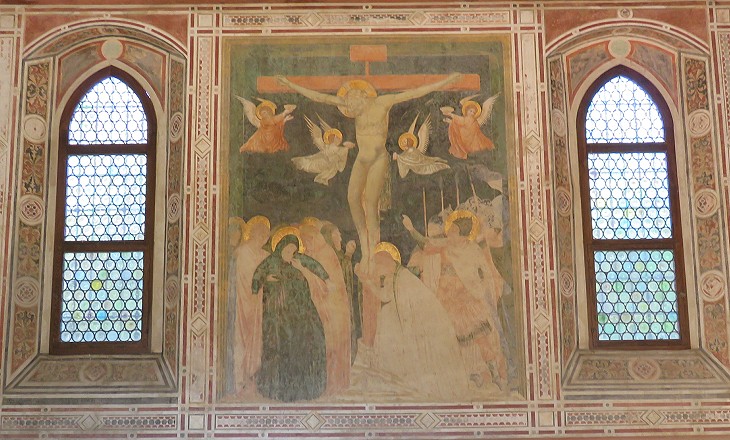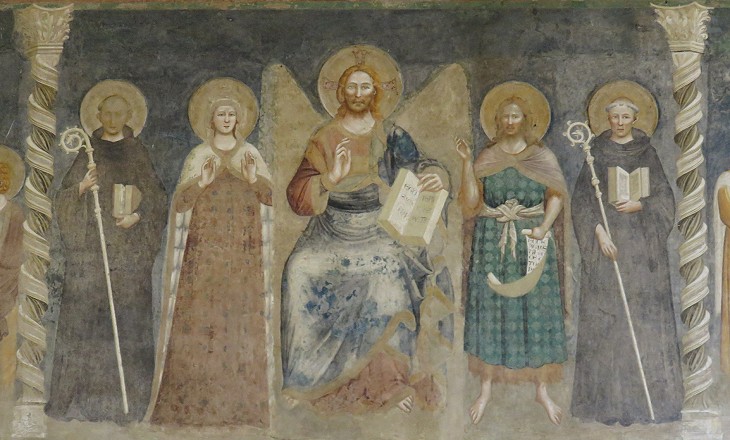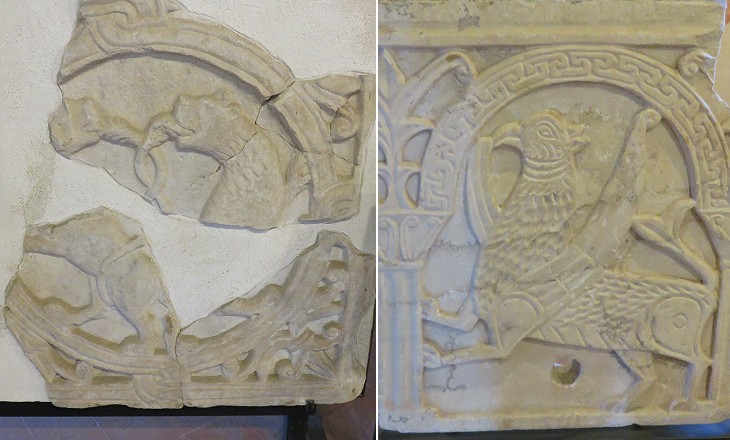  What's New! Detailed Sitemap All images © by Roberto Piperno, owner of the domain. Write to romapip@quipo.it. Text edited by Rosamie Moore. Page added in February 2015. |
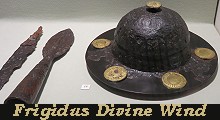 - Abbazia di Pomposa: Mosaics and Frescoes - Abbazia di Pomposa: Mosaics and Frescoes(Longobard weapons at Museo Archeologico di Cividale) You may wish to read an introduction to this section or page one first.
The interior of the church belongs to different periods. Columns and capitals most likely came from abandoned churches of Ravenna and Classe, its former harbour. They were employed to build a church having the same design as S. Apollinare Nuovo and S. Apollinare in Classe. In the IXth century the structure of the building was strengthened with brick pillars. The mosaic floor of the main nave is dated XIIth century, whereas the frescoes were added in the XIVth century and they replaced a previous decoration.
The decoration of the floor is very interesting as it marks the move from the traditional mosaics of the Roman and Early Christian tradition to a new type of decoration based on the use of small pieces of marble or other stones to form geometric patterns.
The traditional mosaic panels mainly portray fantastic or exotic animals which apparently do not seem to have any religious content. The area covered with the new method was designed around a central round slab of coloured marble. Eventually this pattern developed into what art historians call opus alexandrinum or Cosmati work, which is characterized by large porphyry discs.
The frescoes of the church are attributed to painters from Bologna. They were most likely requested to portray Jesus in a very traditional way inside a mandorla (almond nut) shape, because this medieval pattern was used to emphasize the holiness of Jesus (you may wish to see a fresco with a mandorla at St. Saviour in Chora in Constantinople). The procession of female saints is interesting because their embroidered robes form a repertory of Italian luxury silk clothes and Bologna was one of the centres of this industry.
The dating of the frescoes is based on the fact that in some scenes they depict the Abbot in charge or the Archbishop of Ravenna at the time and chronological lists of them are available. From a stylistic viewpoint they show the developments in Italian art which were brought about by Giotto at the beginning of the XIVth century (you may wish to see a fresco by Giotto at Assisi - it opens in another window).
The depiction of the Last Judgement was essential to the purpose of the decoration of a medieval church. It was most often placed on the rear fašade so that the faithful would see it on their way out of the church. The scenes depicting episodes of the Old and New Testament had a generic educative purpose, but the Last Judgement was a powerful reminder of the duties of the believers (you may wish to see the Last Judgement at the Greek Orthodox Meteora Monastery of Agios Nikolaos Anapafsas).
Painters were invited to portray the punishment of the wicked in Hell in the most terrifying and gruesome way. The rule adopted by Dante in his depiction of Hell and Purgatory was based on contrappasso (what you did is done to you), a concept he borrowed from theologians (e.g. St. Thomas Aquinas) and popular medieval "visions" of Hell. There is a devil behind who tears us cruelly like this, reapplying his sword blade to each of this crowd, when they have wandered round the sad road, since the wounds heal before any reach him again. Dante - Hell - Canto XXVIII - Prose translation by A. S. Kline. This Canto deals with the sowers of schism. They divided the body of the faithful so their bodies are cut into pieces.
Art historians have debated at length whether the decoration of the Capitular Hall could be attributed to Giotto who at that time was decorating a chapel in Padua, which is not very far from Pomposa. Evidence of the presence of the master has not been found, but no doubt the painter had seen works by Giotto (you may wish to see The Crucifixion by Giotto at Padua - it opens in another window).
The refectory where the monks had their meals was painted slightly after the Capitular Hall and its frescoes are attributed to Pietro Da Rimini, the likely author of the decoration of a large chapel at Tolentino (it opens in another window). The hall includes frescoes with decorative patterns, one of which can be seen in the image used as background for this page.
The XVth century saw the decline of Pomposa which in 1496 was listed among the properties of another monastery. In 1652 Pope Innocent X ordered the closure of the Abbey and the last monks left a few years later. Return to page one of Pomposa or move to: Introductory page Roman Aquileia - Main Monuments Roman Aquileia - Tombs and Mosaics Early Christian Aquileia Medieval Aquileia Chioggia: Living on the Lagoon Chioggia: Churches Chioggia: Other Monuments Roman and Medieval Cividale del Friuli Venetian Cividale del Friuli Grado Palmanova Roman and Byzantine Parenzo (Porec) Medieval and Venetian Parenzo (Porec) Roman Pola (Pula) Medieval and Venetian Pola (Pula): Churches Medieval and Venetian Pola (Pula): Other Monuments Roman Ravenna Ostrogothic Ravenna Byzantine Ravenna: S. Apollinare in Classe Byzantine Ravenna: S. Vitale Byzantine Ravenna: Other Monuments Medieval Ravenna Venetian and Papal Ravenna: Walls and Gates Venetian and Papal Ravenna: Churches Venetian and Papal Ravenna: Other Monuments Rovigno (Rovinj) Roman and Medieval Trieste Modern Trieste  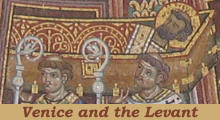 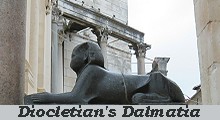 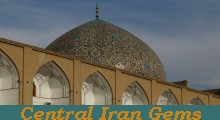 |
